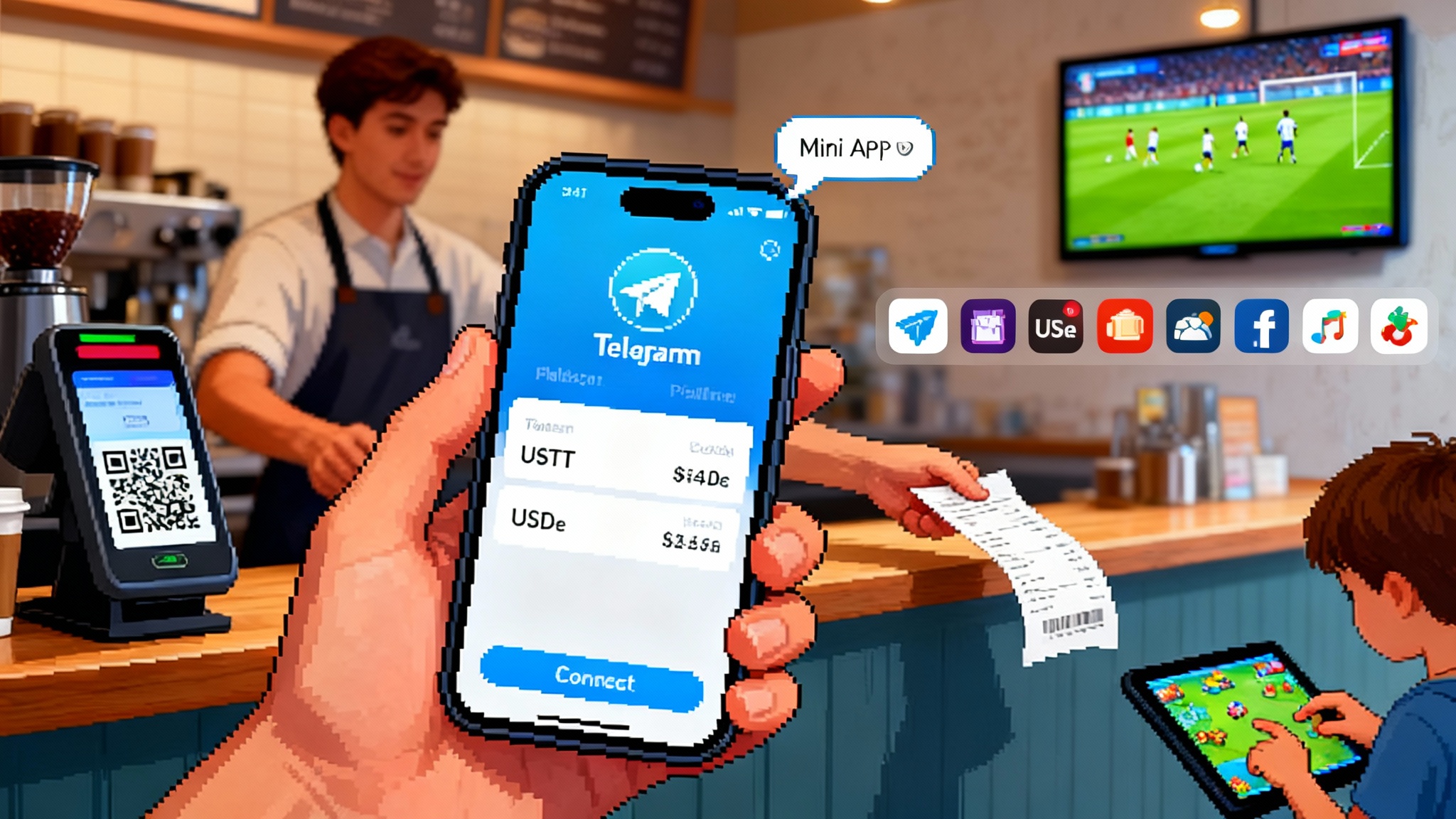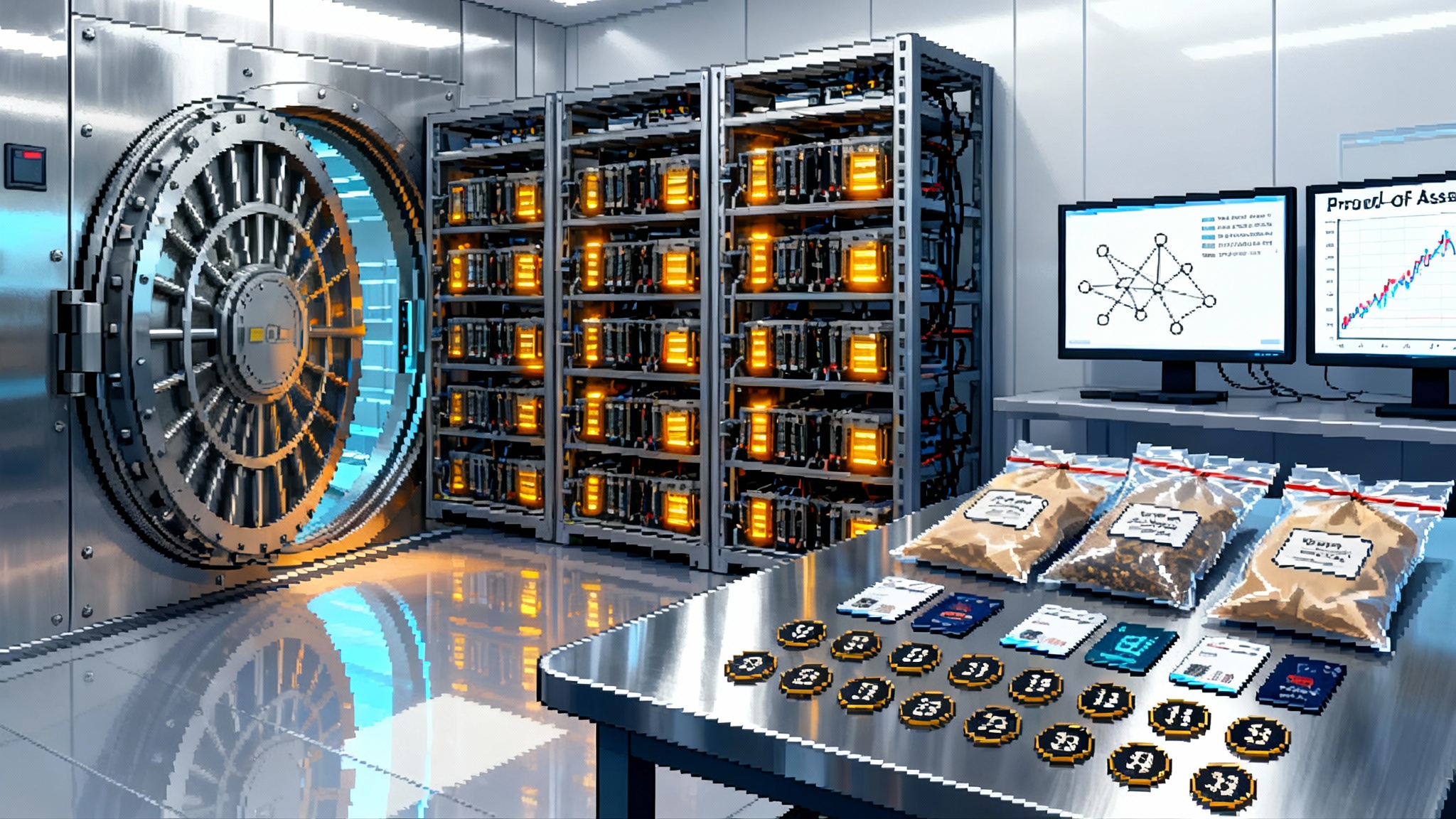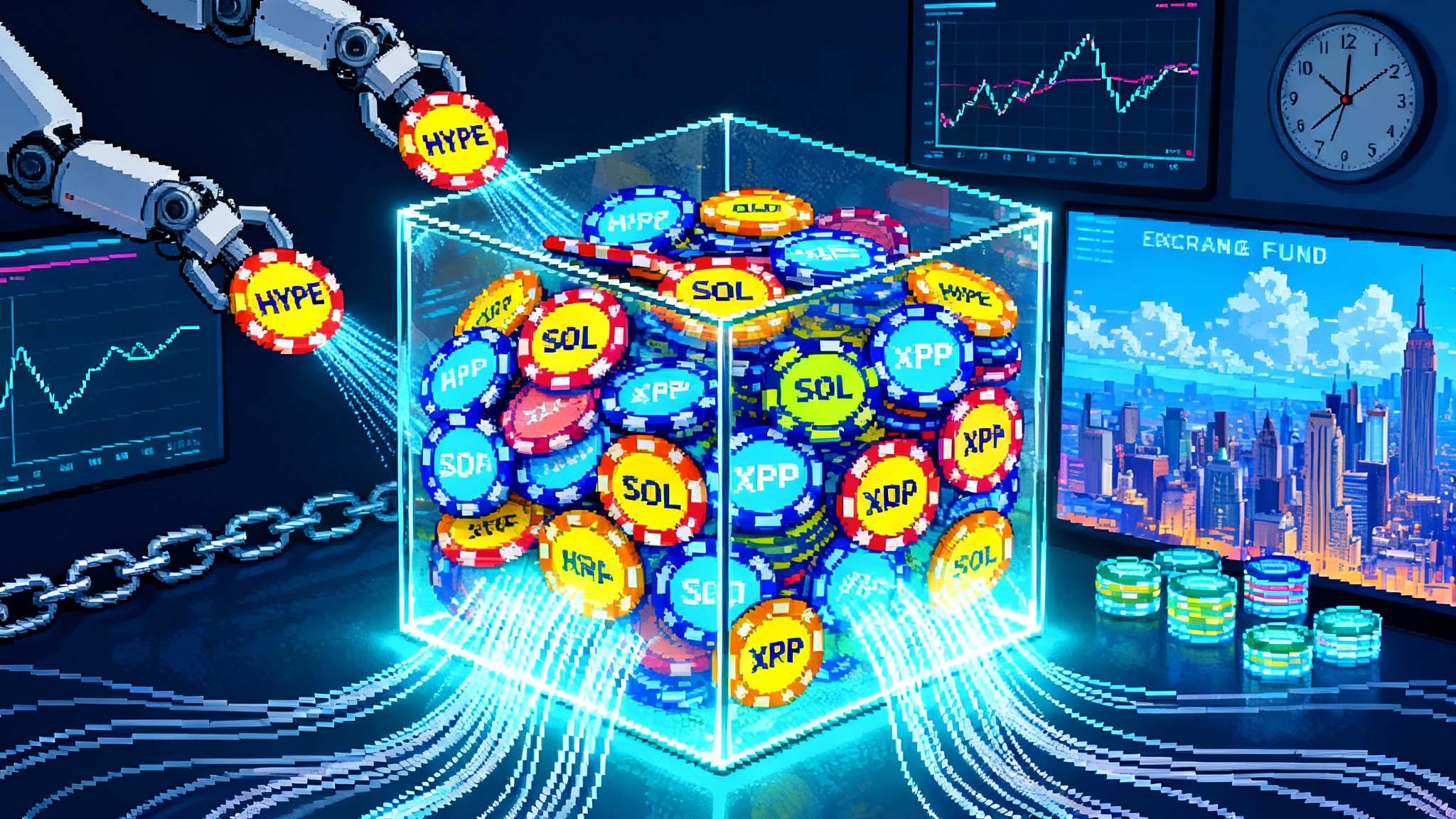DeFi as Code: Uniswap v4 Hooks Meet Unichain's Fast Blocks
Uniswap v4 turns AMMs into developer platforms with hooks, and Unichain brings fast, priority-ordered blocks to curb MEV. Here is what changes for builders, LPs, and traders in 2025.

What just happened
Two announcements reframed decentralized finance as a programmable platform, not just a set of trading venues. First, Uniswap v4 went live with hooks, a feature that lets teams attach custom logic to each pool so market behavior can be shaped like software. Think of hooks as plug in code you can snap onto a pool to add new rules, fees, protections, and strategies. This turned an automated market maker into a developer platform. Uniswap v4 hooks launch.
Second, Unichain, Uniswap’s layer 2 built on the Optimism stack, moved from fast blocks to a new kind of block building. Blocks are assembled inside trusted execution environments, then ordered by clear fee priority. The goal is to shrink maximum extractable value and approach centralized exchange style responsiveness. The combination is important. Hooks shape the rules of the market. Unichain tries to enforce a fairer, faster playing field where those rules can work as intended. Unichain MEV protections live. This push toward fair ordering also rhymes with the rise of permissionless shared sequencers.
Hooks, in plain language
Imagine each liquidity pool as a small vending machine that swaps tokens. In older versions, the machine had a fixed set of knobs. With hooks, developers can open the machine, slot in a custom module, and change how it behaves.
A hook can run code at specific moments of a pool’s life cycle. There are entry points for pool creation, when liquidity is added or removed, before and after a swap, and even when a user donates fees back to the pool. By listening at those moments, hooks let builders implement the features they need without forking the entire protocol.
Concrete examples:
- Dynamic fees that change per trade. During quiet markets, a pool might charge 0.04 percent. When volatility spikes, a hook can nudge fees to 0.14 percent to compensate liquidity providers for risk. It works like surge pricing, but it is governed by code and on chain rules instead of a company dashboard.
- Built in liquidity strategies. A hook can automatically rebalance positions, hedge inventory, or route a fraction of fees into a vault that compounds yield. Think of it as a robo advisor sitting inside the pool itself.
- Intent driven execution. Hooks can accept high level instructions like swap 10,000 USDC to the best possible price within 30 seconds without crossing a certain slippage threshold. The hook can then coordinate with routing, auctions, or external solvers to achieve the intent.
- Safety rails for swappers. A pre swap hook can reject transactions that would get sandwiched or that are likely to revert. A post swap hook can donate part of fees to an insurance buffer when execution quality is poor.
Under the hood, v4 also introduced a singleton architecture. Instead of every pool being its own contract with separate token balances, v4 uses a single contract to hold value and many lightweight pools inside it. That reduces gas for creating and touching pools, which matters when hooks make pool types proliferate.
From automated to programmable
Previous generations of automated market makers were like calculators. You could plug in numbers, get a quote, and the math was fixed. Hooks turn that calculator into a scripting language. Builders can compose market behavior the way they compose web apps.
This matters because many DeFi primitives, like concentrated liquidity or lending against LP tokens, used to require separate products with their own tokens, front ends, and audits. With hooks, a team can experiment inside a familiar interface and a well known codebase. Shipping a new idea goes from six months and a token to a week and a hook.
There is also a social effect. Hooks are discoverable. A developer can read, fork, and remix a dynamic fee hook from another team, the way engineers reuse open source libraries. Uniswap and security partners have run bug bounties, audits, and security contests for the core, and reputable teams are beginning to do the same for their hook libraries. That common base reduces duplicated risk.
Unichain’s speed and fairness, explained
Speed alone does not fix market structure. If a fast chain still lets block builders quietly reorder transactions for profit, swappers and liquidity providers end up paying through worse fills or higher volatility. Unichain’s design tries to address both latency and ordering.
- Fast preconfirmations. Users get transaction signals in a fraction of a second, not after a full block interval. Interfaces can show near instant feedback, which makes DeFi feel less like sending an email and more like tapping buy on a stock app.
- Trusted execution environments inside block building. The code that orders transactions runs in secure hardware, publishes public attestations, and follows a simple rule. Transactions are ordered by priority fee rather than by opaque private order flow deals. This does not eliminate every form of extractable value, but it removes the most egregious reordering games.
- Revert protection. If a bundle of swaps would fail because someone inserted a predatory trade, the system can protect or cancel it before it leaks value. That limits common tactics like sandwiching, where a trader is surrounded by two transactions that move the price against them.
Put together, fast blocks help prices stay fresh and reduce slippage. Priority ordering in a verifiable environment helps investors trust that the line moves in a predictable way. Hooks can then enforce strategies that depend on both properties, like dynamic fees that respond to real volatility rather than manipulated noise. These benefits compound with broader L2 upgrades such as PeerDAS cuts L2 fees.
What builders can compose today
Here are the most promising hook patterns we see teams shipping early:
- Volatility aware fees. Measure short term realized volatility and set fees to target a risk budget. In quiet markets, fees fall to attract order flow. In choppy markets, fees rise so liquidity providers are compensated.
- Liquidity vaults inside pools. Rather than LPs managing ticks by hand, a hook can deposit into a vault that rebalances around mid price, harvests incentives, and reinvests fees. This removes a lot of coordination overhead for smaller LPs.
- Oracle aware swaps. A pre swap hook checks fresh prices from multiple sources and blocks trades that cross a deviation threshold. That catches oracle lags and protects against sudden price gaps.
- Intent auctions. A hook accepts user intents, like best execution within a deadline, then runs a mini auction among solvers to fill the order with slippage caps and revert protection baked in. This trend also aligns with ZK compute markets hit mainnet.
- Built in incentives. A post swap hook can automatically stream a portion of fees or partner rewards to LPs who stick around through volatility, reducing mercenary capital churn.
The early ecosystem map
- Hook toolkits. Security focused libraries and reference implementations are emerging so teams do not reinvent the wheel for fee logic, oracle checks, and vault mechanics.
- Liquidity managers. Known vault teams are adapting strategies to v4 hooks, offering auto rebalancing, risk bands, and incentive harvesting directly inside pools.
- Routing and intent solvers. Cross chain routers and intent protocols are integrating hook aware paths that can respect dynamic fees and revert protection. On Unichain, these can pair with fast preconfirmations to deliver smooth user flows.
- Wallets and front ends. Major interfaces and wallets are rolling out Unichain support, showing near instant status updates and clearer warnings when a transaction might revert.
- Infrastructure partners. Data providers and analytics platforms are building dashboards to compare hook performance, fee take, and LP returns, which should make it easier to choose a pool beyond headline APR.
On Unichain specifically, you should expect activity from stablecoin issuers, large exchanges, and liquid staking providers that announced early support at launch. Market makers and incentive platforms are already running programs to seed v4 liquidity where hooks improve execution quality.
Risks you cannot wave away
Programmability cuts both ways. The same power that lets you compose a better market can create new failure modes.
- Hook risk. Each pool can attach one hook. A bug or malicious change there affects every user of that pool. Insist on battle tested libraries, audits from multiple firms, and time delayed upgrades with veto powers for tokenholders or multisigs. Treat hooks like application code, not passive math.
- Governance and ordering. Priority fee ordering is a simple rule. The governance that defines, monitors, and updates that rule will get tested by edge cases. Add public attestation reporting and independent monitoring so the community can verify that ordering stays predictable.
- Fragmentation. Hooks enable niche designs. Too many specialized pools can split liquidity, hurt routing, and confuse users. Front ends and aggregators should rank pools by execution quality, not just by promised fees, and make it obvious when a pool is experimental.
- Perverse incentives. Dynamic fees and built in rewards can be gamed. A strategy that rewards staying in range might create cliffs where everyone exits together. Model the game, simulate adversarial behavior, and publish stress tests so LPs can see tradeoffs.
- TEE and supply chain risk. Trusted execution environments reduce some attack surfaces and introduce others. Hardware bugs, attestation failures, or firmware backdoors can undermine guarantees. Mitigate with multi vendor hardware, public attestations, and the ability to fall back to safe defaults.
Practical playbooks for 2025 and 2026
For builders
- Ship minimal, audited hooks. Start with a small, composable feature such as volatility based fees or a simple vault. Keep the code readable, publish invariants, and run live canary pools with tight limits before scaling.
- Expose metrics. Publish execution quality, revert rates, fees paid and earned, and LP returns adjusted for inventory risk. Integrate these into your app so users can compare pools honestly.
- Align incentives with time. If you offer rewards or fee sharing, vest them on a curve that rewards sticking through volatile periods. Add penalties for dusting in and out that degrades execution for others.
- Design for graceful failure. If an oracle lags or a solver stalls, your hook should degrade to a safe state. Triggers should be explicit and easy to audit.
For liquidity providers
- Choose hooks like you choose funds. Read the code repository, look for audits, check upgrade rights, and monitor a live canary pool before allocating. Diversify across a few uncorrelated strategies rather than chasing the top headline APR.
- Price the work. Concentrated liquidity is a job. Dynamic fees can help, but you still face inventory risk. Track your payoff versus a passive alternative, and do not assume incentives will cover slippage in stressed markets.
- Use Unichain’s speed to your advantage. On a chain with near instant preconfirmations, you can rebalance more frequently and tighten ranges. Just be strict about fee targets so you are not paying more in gas than you earn.
For traders
- Favor pools with demonstrated execution quality. Look for transparent slippage statistics, revert protection, and proof that the hook improves realized price, not just theoretical curves.
- Leverage priority ordering. If your strategy depends on hitting a moving price, set competitive priority fees. On Unichain, that gets you a predictable place in line.
- Read the warnings. If a front end says a swap may revert, it is usually because the pool’s hook has guardrails. Do not brute force the transaction. Switch pools or adjust parameters.
How Unichain changes the feel of DeFi
Latency shapes behavior. On a one second chain, users hesitate and batch actions. On a 200 millisecond preconfirmation path, they explore and iterate. Liquidity managers can ship tighter control loops. Solvers can run more frequent auctions. Traders can respond to prices that are not stale. When everyone’s control loop shortens, spreads tend to compress and failed transactions fall.
Fair ordering shapes trust. When the rule is public and enforced by verifiable hardware, the default assumption moves from someone is getting a private deal to the line is predictable. That does not erase edge cases or disagreements about rules, but it makes them visible and debuggable.
Put together, you get a platform where programmable market logic meets a fast, transparent execution environment. That is different from simply being on a cheaper chain. It is closer to a marketplace operating system.
Milestones to watch through 2026
- Public attestations everywhere. By mid 2026, expect attestation feeds and independent monitors that verify Unichain ordering followed the published policy. If those feeds are missing or sparse, treat it as a red flag.
- Wider TEE diversity. Look for multiple hardware vendors and cloud providers, plus fallbacks that keep the chain safe if any TEE class is compromised. A good sign is a formal incident response plan and regular failover drills.
- Decentralized sequencing progress. Track how many independent entities can propose or build blocks, and whether there is a market for builders rather than a single operator. More participants should not degrade latency.
- Standardized intents. Watch for wallets and routers adopting a common intents standard that hooks can understand. Success looks like a user writing what they want in one place and getting consistent results across pools and chains.
- Execution quality dashboards. By 2026, leading front ends should show realized price improvement, slippage, reverts, and MEV rebates per pool. If your favorite interface still sorts only by nominal fees, push them to upgrade.
- Real economy trials. Payments, point of sale, and gaming will test whether 200 millisecond preconfirmations are enough to feel instant to non crypto users. Expect a few headline integrations that prove or disprove the fit.
The takeaway
Uniswap v4 made DeFi programmable. Unichain is trying to make it fast and fair. Hooks let teams encode market rules as modular software. TEE assisted block building and priority ordering give those rules a predictable arena. If builders treat hooks like serious application code, if Unichain sustains verifiable ordering at speed, and if front ends rank pools by execution quality rather than hype, the on chain market can start to look like a platform rather than a patchwork. That is the path to narrower spreads, fewer failed transactions, and strategies that earn because they are well designed, not because they cut in line. The work is not finished, but the blueprint is on the table.








